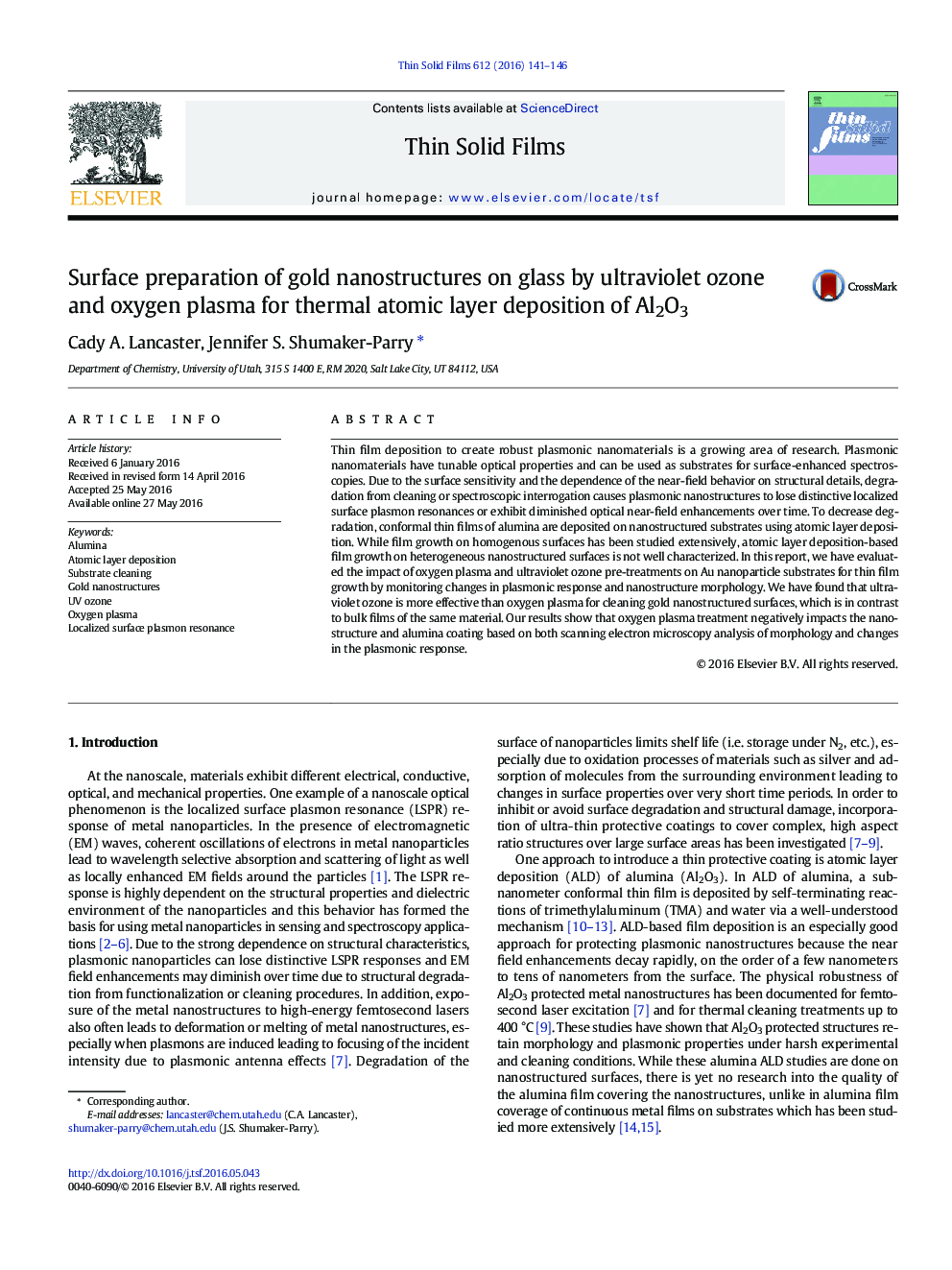| Article ID | Journal | Published Year | Pages | File Type |
|---|---|---|---|---|
| 1663919 | Thin Solid Films | 2016 | 6 Pages |
Abstract
Thin film deposition to create robust plasmonic nanomaterials is a growing area of research. Plasmonic nanomaterials have tunable optical properties and can be used as substrates for surface-enhanced spectroscopies. Due to the surface sensitivity and the dependence of the near-field behavior on structural details, degradation from cleaning or spectroscopic interrogation causes plasmonic nanostructures to lose distinctive localized surface plasmon resonances or exhibit diminished optical near-field enhancements over time. To decrease degradation, conformal thin films of alumina are deposited on nanostructured substrates using atomic layer deposition. While film growth on homogenous surfaces has been studied extensively, atomic layer deposition-based film growth on heterogeneous nanostructured surfaces is not well characterized. In this report, we have evaluated the impact of oxygen plasma and ultraviolet ozone pre-treatments on Au nanoparticle substrates for thin film growth by monitoring changes in plasmonic response and nanostructure morphology. We have found that ultraviolet ozone is more effective than oxygen plasma for cleaning gold nanostructured surfaces, which is in contrast to bulk films of the same material. Our results show that oxygen plasma treatment negatively impacts the nanostructure and alumina coating based on both scanning electron microscopy analysis of morphology and changes in the plasmonic response.
Keywords
Related Topics
Physical Sciences and Engineering
Materials Science
Nanotechnology
Authors
Cady A. Lancaster, Jennifer S. Shumaker-Parry,
